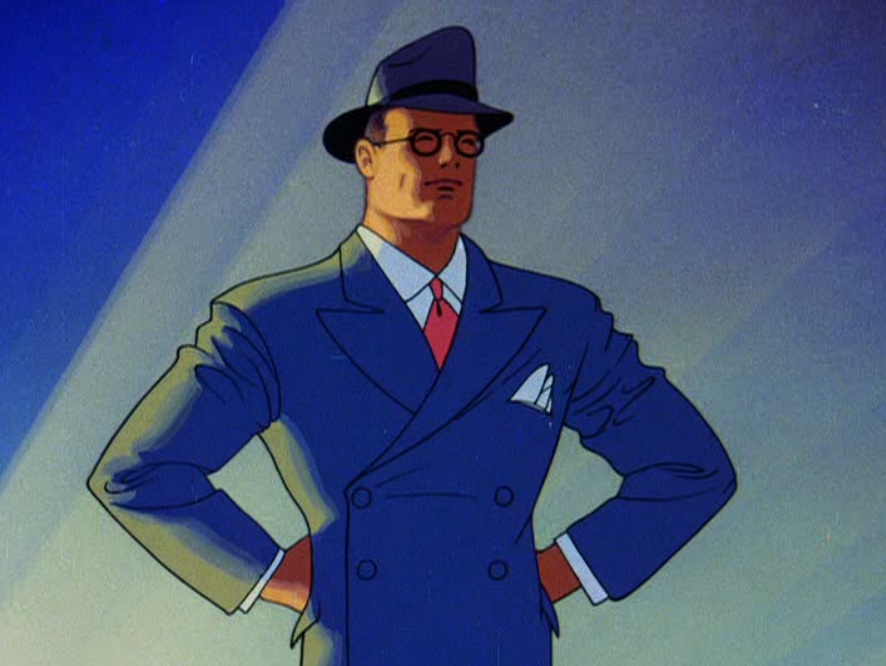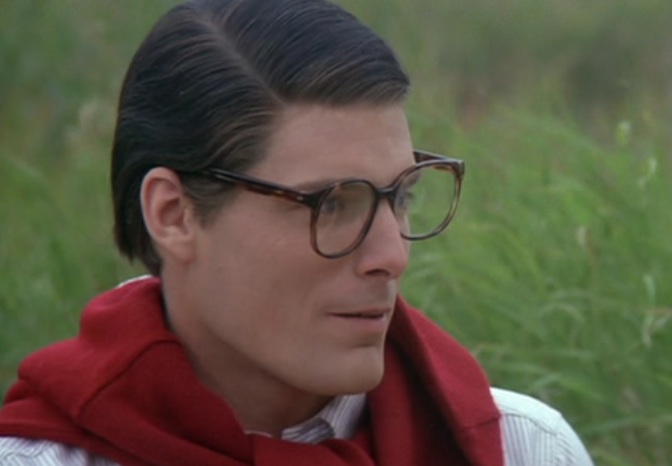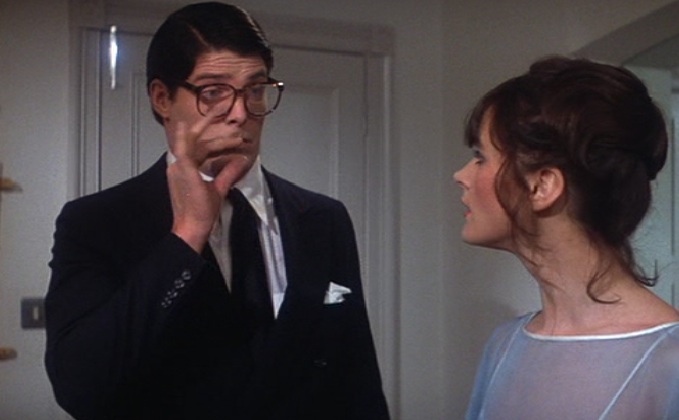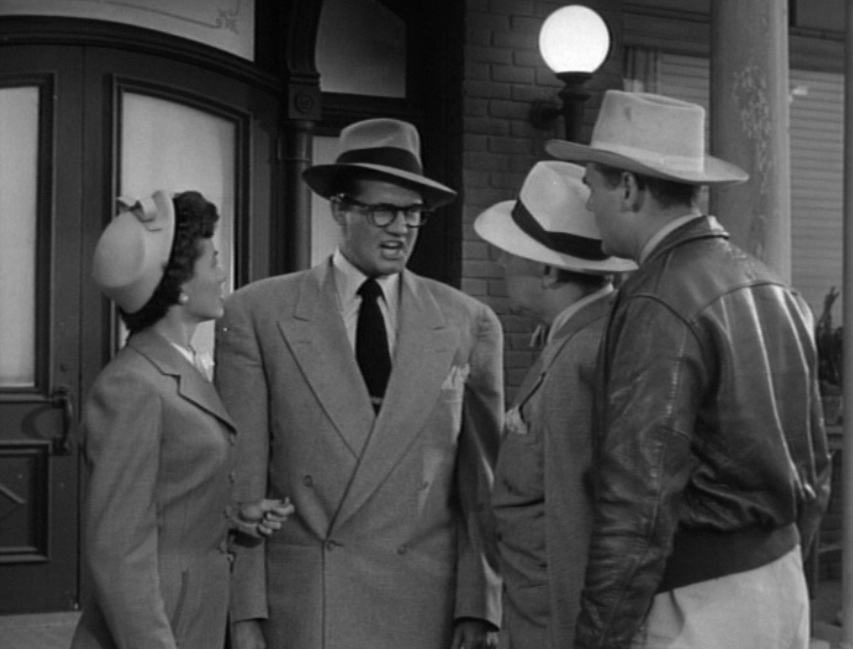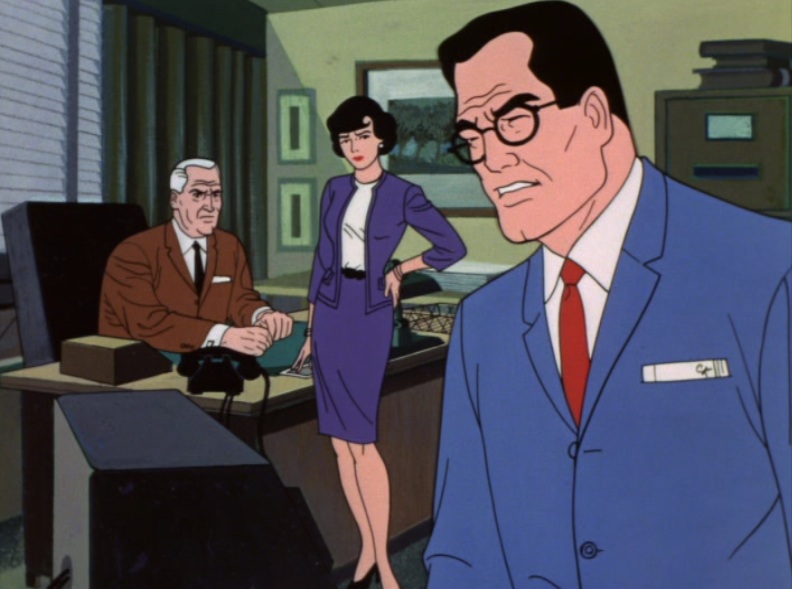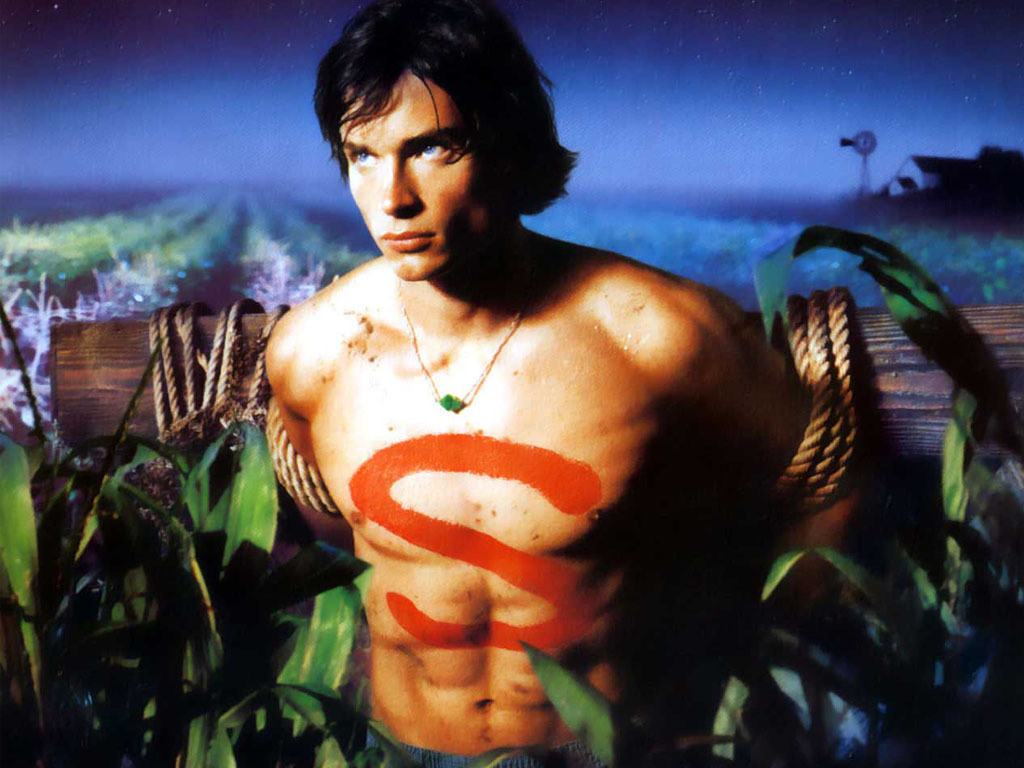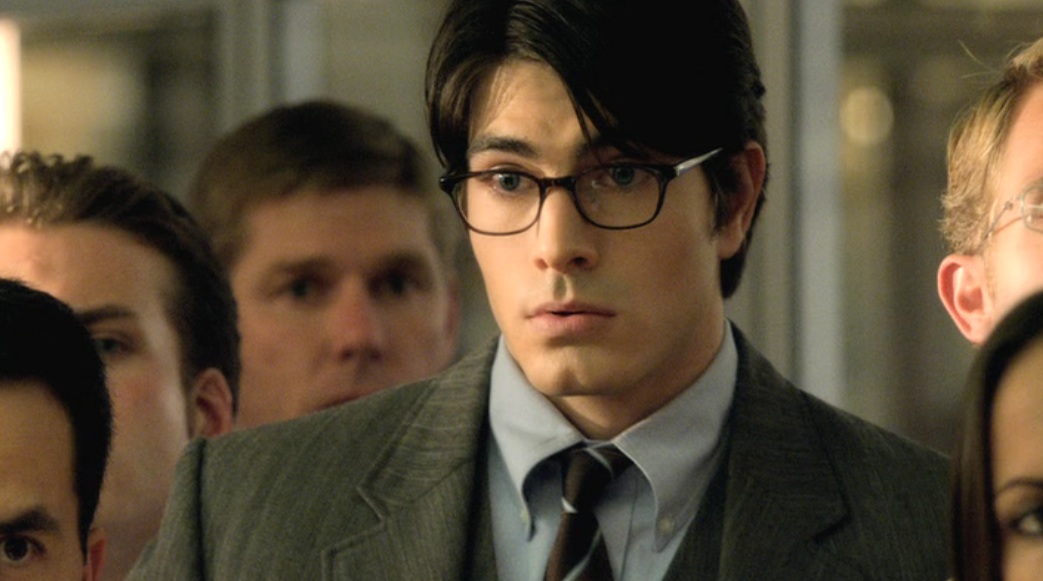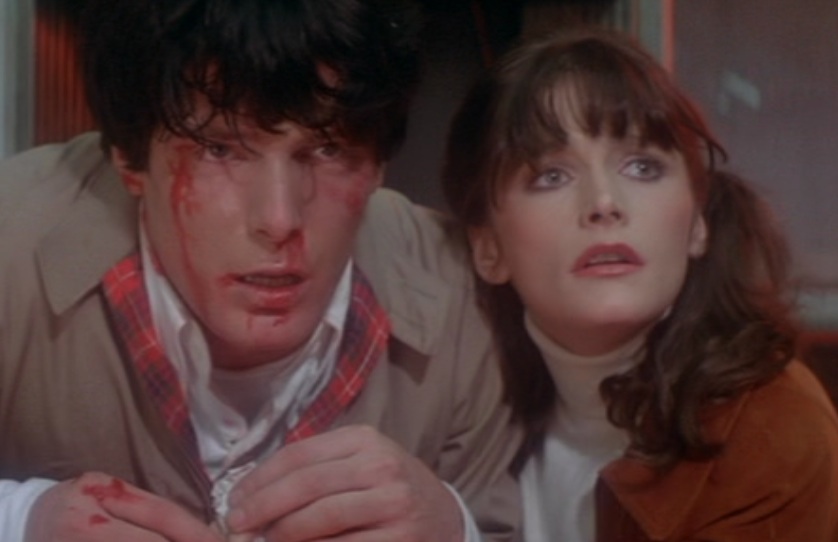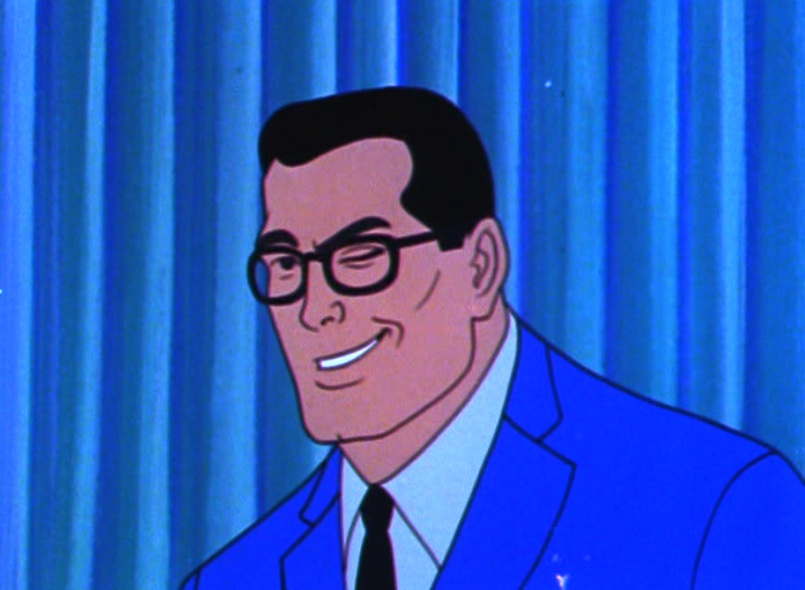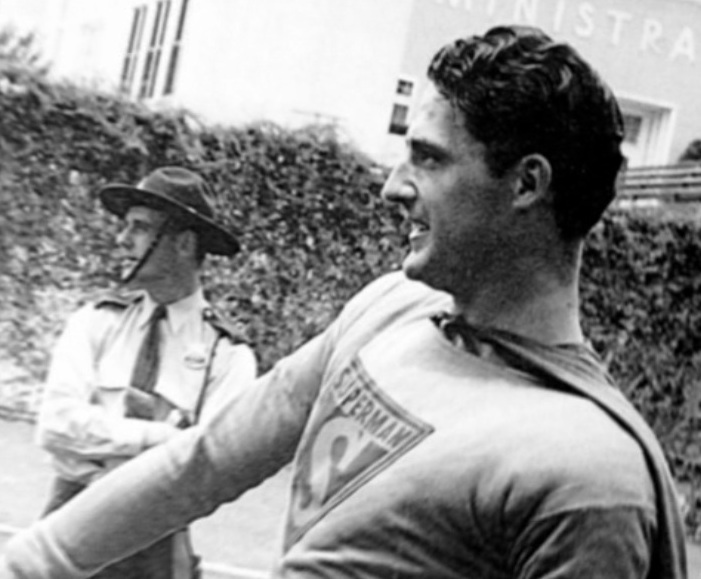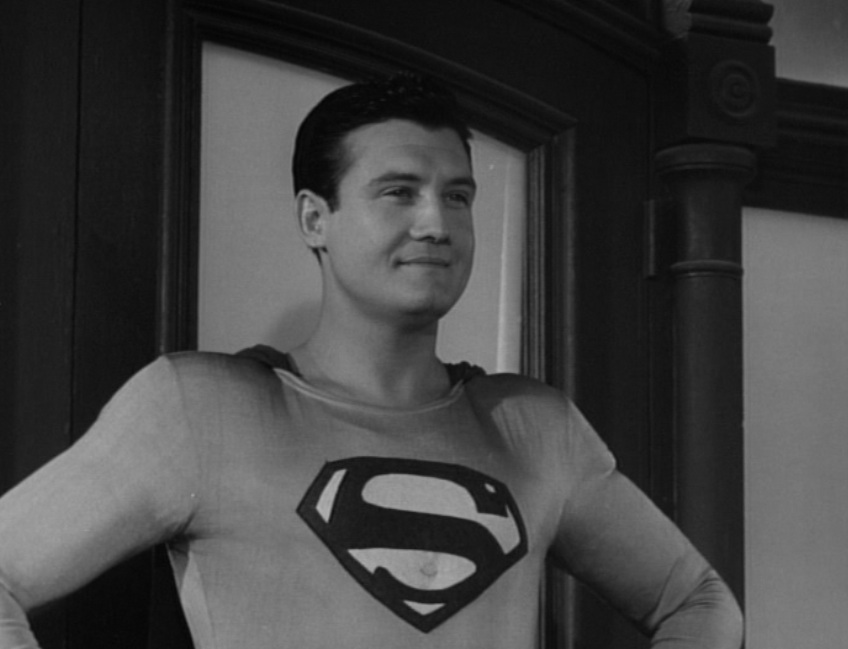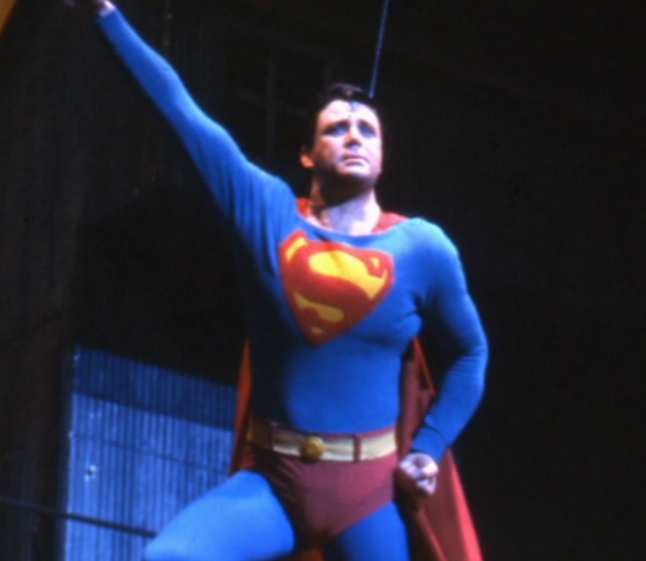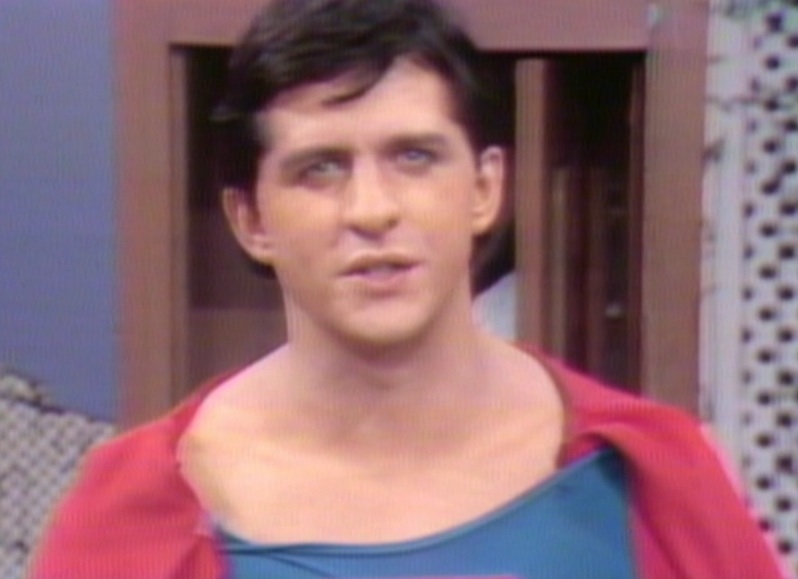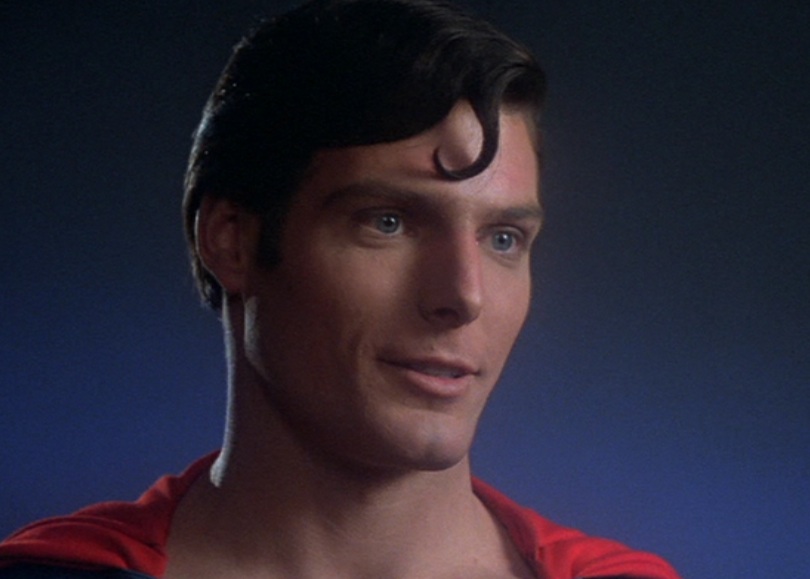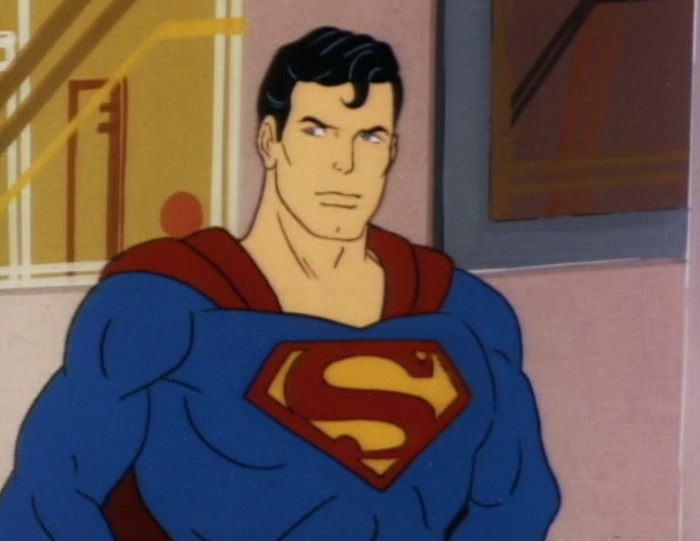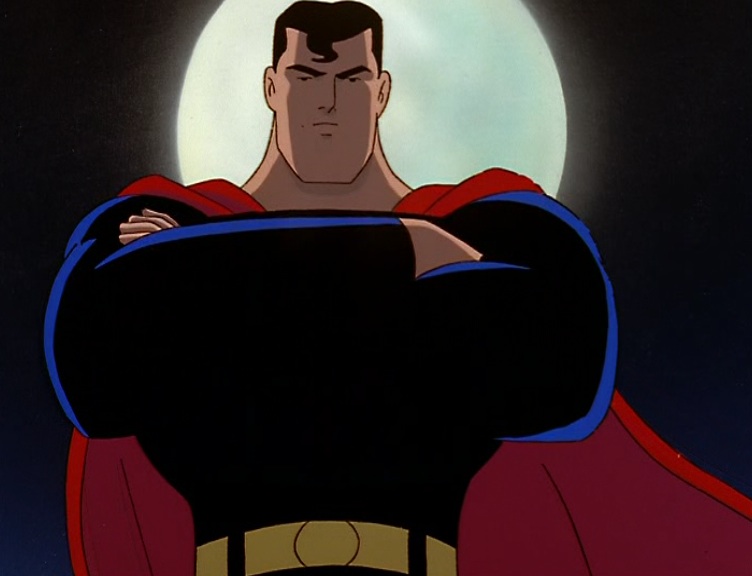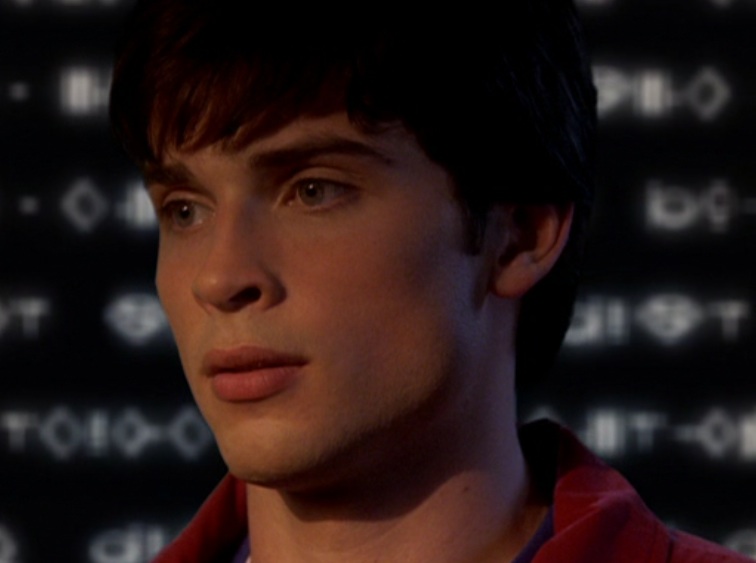Superman posts
Saturday August 08, 2020
Richard Dix, Man of Steel
I spotted this poster last month or the month before when I was leafing through past issues of The Motion Picture Herald, a trade publication for the movie industry in the 1930s, '40s, etc. (I've since moved on to newspapers.com: warning.)
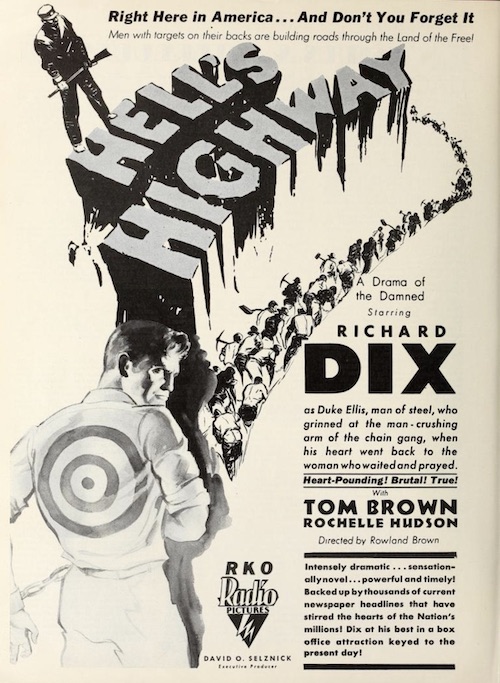 I'll have to check out the movie one day. It's the poster I'm fascinated with. Four things:
I'll have to check out the movie one day. It's the poster I'm fascinated with. Four things:
- The drawing of Dix
- The heavy drop shadow of the title
- The target,symbol on the back
- “Duke Ellis, man of steel”
All of it feels like a template for early Siegel/Shuster Superman. It's ur-Superman stuff and thus ur-superhero stuff. It's laying the groundwork for the next century of wish-fulfillment fantasy.
Yes, I know it's not the template but I'm sure this kind of stuff was around a lot in the 1930s and I'm sure it was influential. And we know Jerry Siegel at least dug this kind of stuff. In Action Comics No. 10, Superman becomes just this, a fugitive from a chain gang, in order to expose a corrupt, sadistic superintendent.
Put it this way: If you were making a movie about Siegel and Shuster and the origins of Superman, a not-bad opening would be the two Cleveland boys coming out of this movie and staring at the poster.
Tuesday October 16, 2018
Superman on the Radio: Ep, 1: Baby from Krypton

Superman debuted in Action Comics No. 1 in June 1938, but by Feb. 12, 1940 he was already all over the place. His daily comic strip began on Jan. 16, 1939 and it was soon in 300 dailies and 90 Sunday newspapers across the country. He crowded out the rest of the Action Comics heroes so after Nov. 1939 he was always the feature on the cover. He got his own quarterly comic, “Superman,” in summer ’39. Talk of a live-action movie serial with Republic Studios fell apart but Max Fleischer began developing his classic collection of Superman cartoons, which would debut in Sept. 1941. Plus a live version of Superman did appear. In June 1940, actor Ray Middleton appeared as The Man of Tomorrow for “Superman Day” at the New York World’s Fair.
Then there was this.
The Superman radio series ran thrice weekly for 15 minutes, and it introduced kids to patter that would be soon be familiar to everyone across the globe—if, here, in slightly different fashion:
Boy and girls, your attention, please! Presenting a new and exciting radio program, featuring the thrilling adventures of an amazing and incredible personality!
Faster than an airplane!
More powerful than a locomotive!
Impervious to bullets!
Up in the sky, look!
It’s a bird, it’s a plane
It’s Superman!
I love the differences: “Up in the sky, look!” When did they reverse it? And when did they change the “faster” to a speeding bullet? Which would, of course, necessitate a change in the third stranza, right? You can’t have bullets twice.
I also love that they call him a “personality.” Plus they‘re polite when asking for your attention.
Believe it or not, this kind of patter continues. Apparently they had a lot to explain about the guy:
And now Superman. A being no larger than an ordinary man, but possessed of powers and abilities never before realized on Earth. Able to leap into the air an eighth of a mile in a single bound. Hurdle a 20-story building with ease. Race a high-powered bullet to its target. Lift tremendous weights and rend solid steel in his bare hands, as though it were paper.
The first episode, no surprise, is about the last days of Krypton. Most of the storyline is familiar to anyone familiar with Superman. Jor-El is Krypton’s “foremost man of science.” He warns everyone of doom. They laugh. He tries to build a rocket to take himself, his wife and his baby, away from Krypton, but ... too late! So they just send the baby.
Some differences from the canon:
- Superman gets his abilities not from a yellow sun but because Kryptonians are “advanced to the absolute peak of human perfection.” They are a race of supermen. Nazism soon made this a little unpalatable.
- Krypton is breaking up because it’s being pulled closer to its sun. (Or is that canon?)
- Jor-El actually wants to send Lara to Earth: “If one of us must go, it should be you!” It’s Lara’s idea to send the baby. Some dad.
We don’t come off well, by the way. Humans are described by Jor-El as “weak and helpless and with all their faculties extremely limited.”
Lara: And that’s where we're going? Oh, how dreadful!
Jor-El: My dear, which would you rather do? Go to Earth and live or stay on Krypton and die?
“Earth: Better than dying.”
Anyway, the baby gets away to Earth. Tune in next time.
Thursday September 13, 2018
Another Death of Superman
This was my favorite response to the news yesterday that DC and Warner Bros. were going in a different direction with their “extended universe” and Henry Cavill was out as Superman.

If you'd asked me what was wrong with DC's universe, I would‘ve most emphatically begun with director Zack Snyder, who made the problematic “Man of Steel,” then the disastrous “Batman v. Superman,” and gone on from there. Most of the bad follows from the decision to hire him. Snyder’s not just form over content, he's vainglorious form over idiot content. The whole “Martha” thing will be a joke for decades to come—for as long as superhero movies are made. Introducing half of the Justice League in “Justice League,” before they had a movie of their own, or at least been in someone else's movie, wasn't smart, either. Hey, here's three origin stories along with the continuing story of the death of Superman in one movie. Have at.
But at the bottom of the list? I.e., What‘s right with the DC universe? Gal Gadot as Wonder Woman and Henry Cavill as Superman.
Many men have played the Man of Steel but only one has played him better—and even then it’s pretty close. Cavill was perfect in looks, form, content. There was a gentleness and quiet to his spirit as Superman, as if he knows he might break the world otherwise. But Snyder gave him an idiot world to act in. He didn't give him a reason for being. After the search for himself, for his origins, he had no motivation other than hanging with Lois and rescuing Lois and confronting Batman. His Clark Kent, reporter, was never grounded in anything—let alone J school. He seemed like Superman playing dress up—or dress down. They never addressed this: Why be Clark when the world was in such trouble? Their answer made it seem like he didn't want to be Superman. Helping people? What a drag. He seemed lost and no writer or director reached out to lend a hand.
The tweeter above also gave us this: “Besides being distressingly handsome, Cavill perfectly blended humanity and an ethereal otherworldliness that makes Supes Supes.” I love that “distressingly handsome” bit. So true. Every so often I'd call Patricia over to view some photo of Cavill and say, “My god, look at this.” For some reason, Patricia was less impressed—until she saw the photo montage with his dog, Kal; then she became a fan.
Remember the promise?

Superman: illegal alien. Unwelcome. Incarcerated. It had even greater meaning than we knew. Then it all got lost in Zack Snyder's noise.
My boy. Look what they did to my boy.
Monday May 14, 2018
Margot Kidder (1948-2018)

From my 2013 slideshow on the cinematic history of Lois Lane:
Why does Kidder's Lois Lane in still define the role? Because there's a difficulty dichotomy to thread in portraying Lois. She's supposed to scoop Clark and get rescued by Superman, but often within this dynamic they make her either too tough (and unlikeable) or too agreeable (and thus hardly a scoop-worthy reporter). Margot was able to inhabit both aspects of Lois. She held the two opposing ideas of Lois in her mind and was still able to function. Her toughness (at work) was never annoying, her vulnerability (around Superman) was always endearing. Plus I just like the way she says “Peter Pan.” Not to mention, “Blaghhh.”
She's also the object of my fifth-most quoted movie line. Not to mention one of the primary actors in the best lost scene ever. And she was smart enough to know the franchise was better in the hands of Richard Donner than Richard Lester—for which she got the shaft in “Superman III.” If barely appearing in that stinky movie is really “the shaft.”
I love that little scene in the original, so '70s New York, when Lois and Clark run into film critic Rex Reed coming into The Daily Planet building, and we get this exchange:
Lois: See anything good today?
Rex: Not until you came along.
Truer words.
Tuesday February 06, 2018
Super-Homme
I was watching “Voyage á travers le cinema française,” a three-hour doc about the history of French cinema—essentially Bernard Tavernier doing with France what Scorsese did with America back in ‘95—and an hour in we get this shot while Tavernier talks up the many great theaters in postwar Paris:

It took a little digging to figure out this promotion was for the 1948 “Superman” serial starring Kirk Alyn. OK, a little peering. The spiderwebs on the poster to the right, sign of the villainous Spider Lady, are the giveaway.
I’m a little surprised that Superman was a big-enough deal to warrant this kind of promo, to be honest. And this very French promo. Look at Supes' face: more Jean-Paul Belmondo than Kirk Alyn. Then again, this is before the Cold War-era “the American way”; and it's not exactly leaping a tall building in a single bound to go from liberté, egalité, fraternité to verité et justice.
Saturday August 06, 2016
Everything Wrong with 'Batman v Superman'
Not a huge fan of these “Everything Wrong with...” videos but agree 100% with this one. What's the highest sin total they've had? Surely, this is near the record—even though they forgot the idiocy of the U.S. government nuking Doomsday/Supes in space when Supes was taking Doomsday away from Earth. Worth a few more sins:
I had a lot of the same complaints last March.
Thursday December 31, 2015
Superman Before The American Way
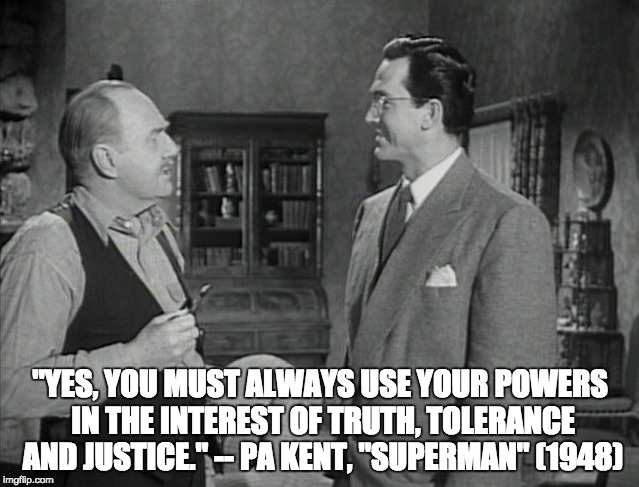
That was in 1948, three years after the discovery of Auschwitz, Buchenwald, et al., when tolerance seemed like an important concept to instill in kids. Three years later, for the “Adventures of Superman” TV series, and amid various McCarthy and HUAC hearings in which people lost careers and lives because of left-wing political leanings, “tolerance” was removed in favor the all-purpose “American way.”
Feel free to share.
Monday September 21, 2015
Jack Larson (1928-2015)

Larson as Jimmy Olsen in “The Haunted Lighthouse” episode of “The Adventures of Superman,” which aired on Sept. 26, 1952.
Shortly after I heard about the death of Jack Larson, who played Jimmy Olsen on “The Adventures of Superman” TV show in the 1950s, I read the following tweet from author Mark Harris:
RIP Jack Larson. Superman's pal Jimmy Olsen. Montgomery Clift's boyfriend. Virgil Thomson's librettist. James Bridges's life partner. Wow.
— Mark Harris (@MarkHarrisNYC) September 21, 2015
With one tweet I found out the original Jimmy Olsen (or the second, after Tommy Bond), whose acting career pretty much ended with Jimmy Olsen, was:
- gay
- involved in high art
- had good taste in men
That's the problem with being straight. Actually, more, that's the disadvantage for anyone in the majority when the majority forces people who are different from them underground or away—segregating or marginalizing them. It means you don't know the whole story.
I mean, how much have I written about Superman? And I didn't know any of the above? Yeah, I feel a little rooked.
The New York Times has a good obit, which makes Larson's life and career sound pretty fascinating. Thomson's previous librettist, for example, was Gertrude Stein. Larson met James Bridges when they were both young actors, and Bridges went on to write and direct, among other films, “The Paper Chase,” “The China Syndrome,” and “Urban Cowboy.”
Imagine if this were 40 years ago. How odd Larson's story would read. How much of it would've remained hidden from people like me.
Did anyone ever interview Larson about Superman and popular culture? About what it was like to star in a superhero story at a time when movies were for grownups and reading comic books were thought to lead to homosexuality? And to strive for decades for literary respectability (plays, opera) only to find the culture gravitating in the opposite direction? Toward superheroes?
Anyway, I agree with Mark Harris. Wow.

Larson as Bo the bartender in 2006's “Superman Returns.”
Saturday July 11, 2015
On My World, the ‘Batman v Superman: Dawn of Justice’ Trailer Means Hope
Here's what I wrote in June 2013 at the end of my review of “Man of Steel”:
“Man of Steel” raises interesting questions only to abandon them to spectacle. ... One can hope, in the next movie, it’s not business as usual in Metropolis, that there are people still freaked by what happened, and that, even as some view Superman as a god-like figure, others blame him for bringing near destruction to the planet, for bringing the Kryptonian warriors here in the first place, and search for ways to destroy him or control him. There should be a vocal element again him. The more decent he is, the more vocal they should become. He should be perplexed by this. He should always look at us and wonder whether we’re worth saving.
It looks like I get my wish:
In this trailer, we finally get a sense of why the Batman animus toward Superman. One of those tall buildings that crumbled in Superman's battle with Zod in “Man of Steel” belonged to Wayne Enterprises, and people died, his people, and that's why Batman is pissed; that's why he comes back; that's why he fights Superman.
Better, the world is still freaked. Powerful forces (Holly Hunter, Lex Luthor, et al.) still want to control what they can't control. Those in need view Superman as a Godlike figure.
I still have causes for concern: 1) Why is Wonder Woman in this? 2) Zack Snyder, auteur for the doofus generation, is still directing it.
But this trailer gives me hope. You know: hope.
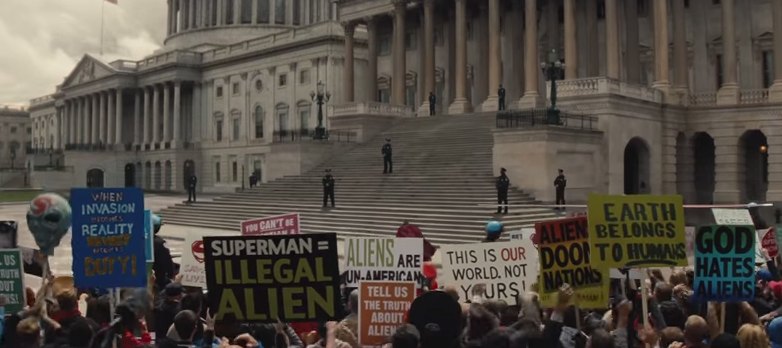
FOX News watchers protest the Man of Steel.
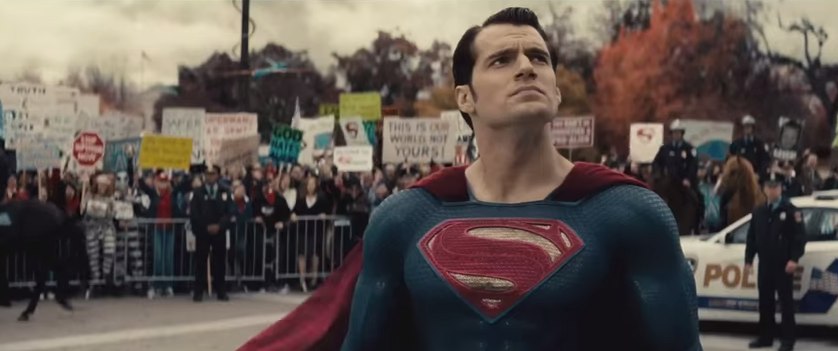
Superman's good deeds, about to go punished.
Saturday May 31, 2014
How Wrong is Joe Posnanski About Superman Movies?
Damn. I was enjoying the column, too.
In it, Joe Posnanski, my man Joe, my regular lunchtime reading, wrote about why walks are down in Major League Baseball, and why attendance is down in the American League, and he makes a joke about all the charts he's throwing up, about how “this is the chartiest post I've ever done.” So he finishes it with a flourish. He adds a line graph on his ratings for the Superman movies:

A few things I don't get:
- The rise from “Superman: The Movie” to “Superman II.” Is he suggesting “Superman II” was better? Richard Lester's “Superman II”?
- I get the steep drop for “Superman III” but why does it rise again for “Superman IV”? Shouldn't it plummet? I mean off the charts?
I like that he likes “Superman Returns”—that movie is way too maligned. As for his feelings about “Man of Steel”? Whatever. It's not the worst of the Superman movies—that's almost impossible. I originally had it second-best but I might drop it a bit now. Maybe below “Superman Returns”? Maybe below the Donner cut of “Superman II”? Nah. It's still #2 or #3 in my book. Or blog.
But I don't mind that Posnanski dislikes “Man of Steel” so much. That's fine. But to think the series got better with “Superman IV: The Quest for Peace”? Now that's just crazy talk.
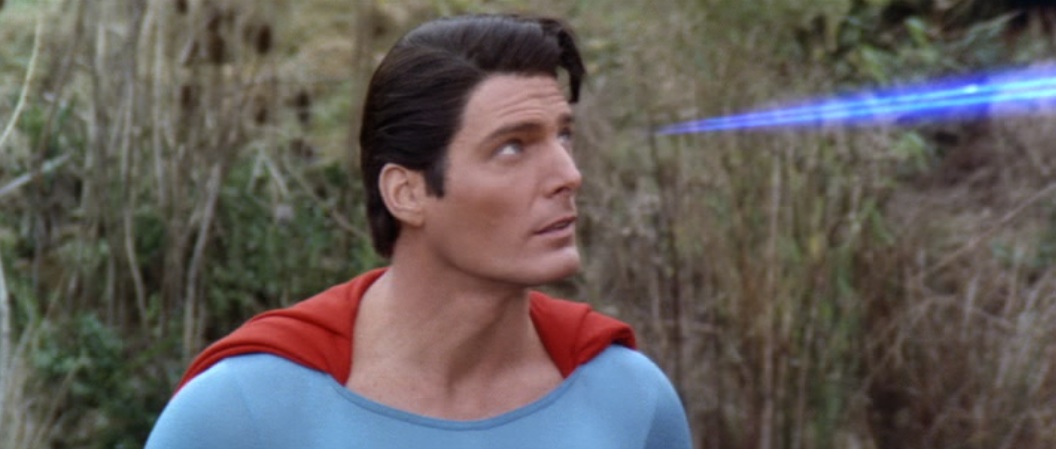
Superman's blue eyebeams miraculously repair the Great Wall of China in “Superman IV: The Quest for Peace.” What—you didn't know about the blue eyebeams? I think they first made an appearance in Action Comics #389: “The Shrinking Budget of Golan and Globus.”
Sunday July 28, 2013
HISHE: How 'Man of Steel' Should Have Ended
This one's pretty good:
I particularly like:
- “You mean a randsom priest?”
- “Oh my gosh. Thousands of people might have died!”
- “Oh well, what're you gonna do about it? Snap my neck?”
In the above, Kal-El uses his brains rather than his brawn but then the movie's over in an hour. The dramatic problem is almost always how to lengthen the problem (believably) rather than solve it.
Here's my review of “Man of Steel.”
Monday July 08, 2013
Did Superman Resurrect Patriotism? On Truth, Innocence, and the American Way

Was “Superman” the first patriotic movie I saw in a theater? I guess I’m asking myself more than you.
I was born in 1963 and grew up in the age of the cinematic anti-hero—“Butch Cassidy and the Sundance Kid,” “Billy Jack,” “Evel Knievel”—when patriotism was almost always seen as the last refuge of scoundrels. On TV’s “M*A*S*H” it was used by Frank Burns and Col. Flagg as an excuse for spying and incorrigible behavior. In the movies, rich men justified corrupt business practices by wrapping themselves in the flag. Sure, Apollo Creed came into the boxing ring in “Rocky” dressed as Uncle Sam, and wearing stars-and-stripes boxing trunks, but it felt ironic. The flag meant Nixon back then. It meant Vietnam. People who waved it were squares and fools and con artists.
Then Superman embraced it. “I’m here to fight for truth, and justice, and the American way,” he told Lois. Moviegoers in December 1978 laughed out loud at that line. So corny! Their laughter drowned out Lois’ response, which was was theirs:
Lois (snorting): You’re gonna end up fighting every elected official in the country!
By the second movie, Superman, the superpatriot, literally carries the American flag to the White House. A year after that, Rocky wears Apollo’s stars-and-stripes trunks himself, inironically, in “Rocky III,” and again in “Rocky IV,” where he also drapes himself in the American flag. Suddenly everyone was draping themselves in the flag: Stallone, Olympic athletes, politicians. Suddenly it became problematic not to wear the American flag. Anyone who didn’t was suspect.
Obviously a lot of factors went into this profound cultural and political shift. In 1979, with long gas lines and Americans held hostage (or America Held Hostage, as ABC News put it), it felt like the world was spitting in our face. Working-class jobs were disappearing and people felt powerless. The U.S. Olympic hockey team, college kids and massive underdogs, upset the mighty Soviet machine in February 1980 before a home crowd, chanting “USA! USA!,” and it felt good to chant that. Apparently it felt good to vote for Ronald Reagan, too. A majority of voters did that. Twice.
But did some part of it begin with Superman saying he was going to fight for truth, justice and the American way?
Here’s director Richard Donner in the 1980 TV documentary, “The Making of Superman: The Movie,” talking about the impact the character had on him:
He’s a lot of what America once was a long time ago. I’m a very liberal human being in my philosophies and my politics. And I find myself, in an odd sort of way, looking and respecting the conservative attitude of what Superman stands for now. Because I think I see a lot of my philosphies in application now and I’m not very happy with them. And I almost wish I could go back to what once was, and what America once was.
I almost wish I could go back to what once was, and what America once was. That line may be the single best description of post-1980 political theater that I’ve read.
According to Christopher Reeve in the same documentary, this fact, this going back to what America once was, was the most difficult part of creating “Superman”:
We all know Superman can leap over tall buildings but the question is could he leap over the generation gap since those early Siegel and Schuster days. We wanted to know if a man from the innocent ‘30s could survive in the post-Waterage ‘70s.
It’s instructive to see how they did this. How did Superman, as a character, go back to what America once was? In a way, he never left it.
He was raised in Smallville, Kansas, in the 1950s, then disppeared for 12 years of education under Jor-El, before turning up in Metropolis in 1978. This means—and this is no small cultural feat—he leaped over the 1960s in a single bound. He avoided our internal conflicts over the Vietnam War, black power, Watergate. He avoided the assassinations of MLK and RFK. He didn’t see the American myth die, or at least reassemble itself into multicultural pieces. He didn’t recognize the limits of American power because he himself had none.
Eventually the movies themselves went back to what American once was. During the Easy Rider/Raging Bull decade, roughly 1967 to 1977, our most popular movies were disaster-ridden (a ship overturned, a tower burned) and dark (the devil was in a Sicilian family, or a little girl, or a great white shark). Our heroes and anti-heroes didn’t end well. Bonnie and Clyde died. Butch Cassidy and the Sundance Kid died. Wyatt and Billy died. Ratso Rizzo died. Jenny died. Randle Patrick McMurphy had a lobotomy and then died.
Then Rocky Balboa went the distance. “Rocky” was called a sleeper hit because the lead was unknown and no one expected it to be a success, but movie audiences loved it. Critics at the time wrote that it reminded them of a Frank Capra movie. It began in the gritty ‘70s, with poverty, gangsters and the down and out, but leaped back to the Capraesque ‘40s for its happy ending. It won best picture and was the No. 1 box-office hit of 1976.
Then George Lucas leaped back even further. Not to “a long time ago in a galaxy far, far way,” but to the movie serials of the ‘30s. “Star Wars” was a better version of these heroic cliffhanger fables of good and evil, and it was the No. 1 box-office hit of 1977. “Raiders of the Lost Ark, an even more obvious update, was the No. 1 box-office hit of 1981. Then we were off to the races.
It’s kind of a shock to rewatch all of the Christopher Reeve/Superman movies, as I did recently, because you see this cultural and cinematic shift take place. “Superman: The Movie” is set in the gritty world of the 1970s, where journalism matters; “Superman IV: The Quest for Peace” is set in the business-oriented, hostile-takeover world of the 1980s, in which journalism is reduced to a Page-Six joke. In the first movie, it felt innovative that the star of the film actually lifted weights to become its central character. By the fourth movie, we were all lifting weights. We were all going to the gym. Our bodies got hard while our minds got soft.
One always wonders how much the cultural affects the political, and to what extent our cinematic wish-fulfillment fantasies creep into politics. The modern GOP certainly feels like a Hollywood studio of yore, offering up the great American myth in the manner of Louis B. Mayer. It’s morning in America of a kindler gentler nation in which no child gets left behind and we put country first and our enemies are wanted dead or alive. Mitt Romney’s campaign slogan, “Believe in America,” actually comes close to the first line of “The Godfather,” “I believe in America,” which the Italian barber tells Don Corleone. The barber meant it when he said it but the movie didn’t. Back in 1972, we knew there was an underside to the American myth. To get ahead, sometimes you had to get your hands dirty. Or bloody.
We ignore that underside now. We have a forced innocence now. Here’s Reeve again in that 1980 TV documentary explaining Superman:
He’s got all these powers, but he’s got the kind of maturity—or he’s got the innocence, really, to look at the world very, very simply. And that’s what makes him so different. When he says, “I’m here to fight for truth, justice, and the American way,” everyone goes [coughs into hand behind a sly, knowing smile]. You know? But he’s not kidding.
Innocence is the key word here. It’s positive in Reeve’s explanation but it reminds me of this line from James Baldwin’s essay, “Stranger in the Village”:
Anyone who insists on remaining in a state of innocence long after that innocence is dead turns himself into a monster.
Baldwin wrote that line in the late 1950s, I first read it in the late 1980s, but for most of my adult life it’s not only felt like the truth; it’s felt like the American way.

Sunday June 23, 2013
SLIDESHOW Essay: An Open Letter to Clark Kent
Monday June 17, 2013
Ranking Every Superman Movie Ever Made
I did it with the Batman movies so I figured I'd do it with the Superman movies, too. To be honest, I planned on doing it before “Man of Steel” opened last Friday but time got away from me, and unlike some folks I can't turn back time.
So here you go: worst to first of every Superman movie ever made.
10. Superman IV: The Quest for Peace (1987)
Everyone looks too old, while the subplots (aerobics and hostile takeovers) remind us of everything we hated about the '80s. The story? Awful. Spurred by an annoying kid, Superman unilaterally, dictatorially, decides to rid the world of nuclear weapons, but because Lex Luthor places a Superman hair and a gold suit in one of the rocket capsules, a villain, Nuclear Man, emerges. The real villains here are the producers, Monahem Golan and Yoram Globus, the Israeli cousins who bought the rights to Superman but slashed his budget in half when other pet projects failed. As a result, big scenes became small, the global became local, and everything looks fake fake fake. Watching, you won’t believe you once believed that a man could fly.

Super wall-building ray
9. Superman and the Mole Men (1951)
If Kirk Alyn played Superman with wide-eyed bombast, George Reeves takes it down a notch. Or 10. His indifference to the role permeates the character. His Clark Kent is strong and smug, his Superman vaguely disgusted and contempuous. He messes with both the first and second amendments—convincing Lois not to publish a story and (in a hilarious scene) disarming an entire Texas town. The movie's main action consists of a midget in bald wig and furry suit being pursued over nondescript brush and hills by rednecks. It's a dry little movie filmed in a dry little backlot.
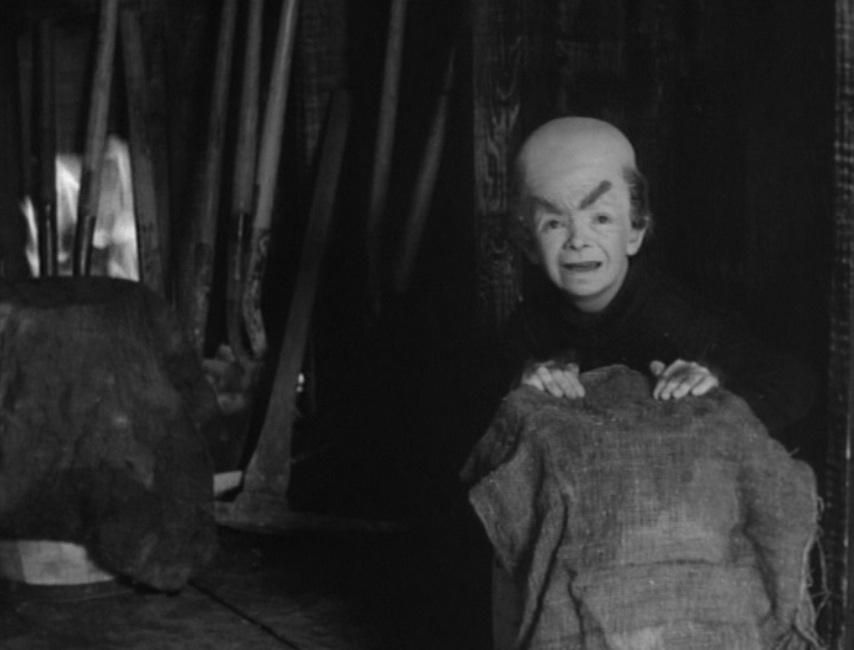
Super low-budget
We get gags. We get evil Superman. But most of all we get Richard Pryor doing unfunny bits: drunk, “Patton,” white guy. He plays at Superman with a tablecloth as his cape, then skis off a high-rise and walks away, looking, not astonished at surviving a 40-story fall, but simply embarrassed. He should. Think of everything they could’ve done with this movie and look at what they did. Look at what they did to my boy.
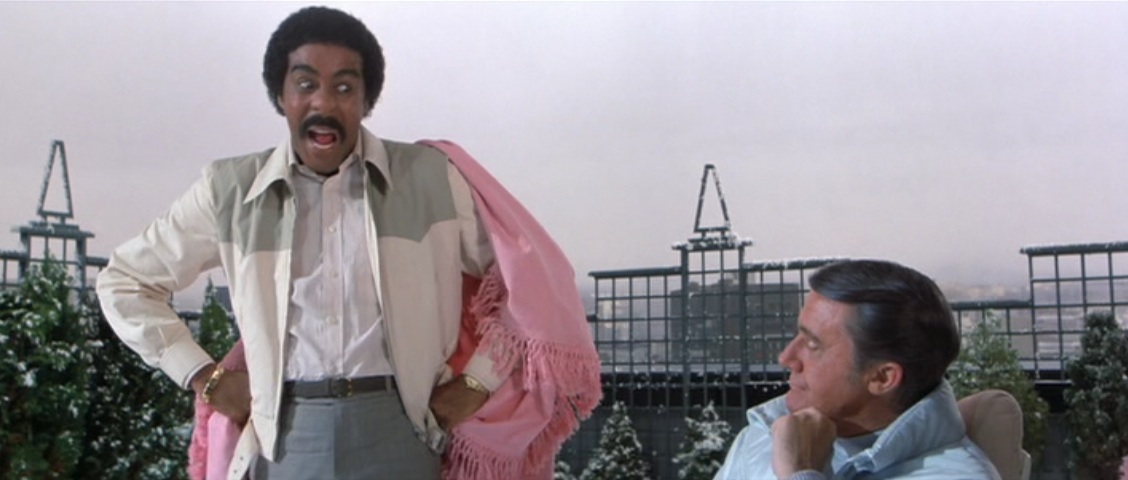
Super tiresome
7. Atom Man vs. Superman (1950)
“Atom Man vs. Superman” feels cheaper than its predecessor: more stock footage, more shots of Clark Kent ducking behind the same file cabinet, and one episode, about Superman's origins on Krypton, is essentially the entire first episode of the first serial retold. Meanwhile, the titular Atom Man, Lex Luthor's secret identity, looks like they took a jug, cut out eyeholes, sprinkled on glitter, and plunked it on Lyle Talbot’s poor head. You know the scene in “Duck Soup” where Groucho gets his head stuck in a pitcher and Harpo draws a Groucho face on it? Like that. On the plus side, in Chapters 14 and 15, Superman beats Slim Pickens to the punch by riding a nuclear missle out to sea. Yee ... ha?
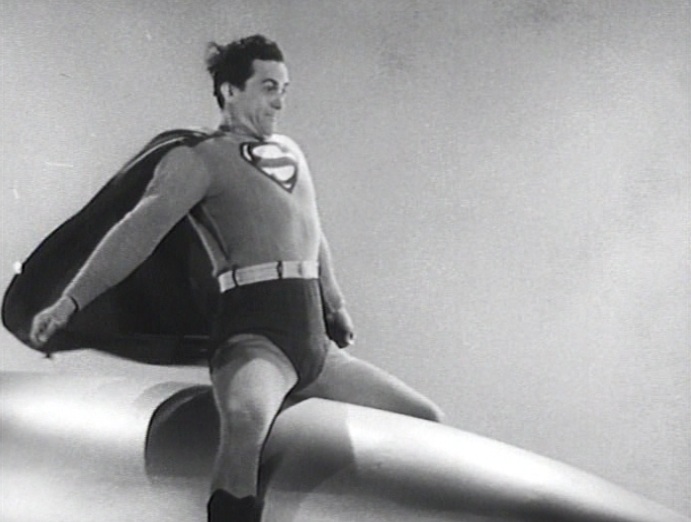
Super Strangelove
“This is a job ... FOR SUPERMAN!” Except this is a Superman who doesn't do his job. He strolls into The Daily Planet in the middle of the day, then spends most of the movie clumsily flirting with, revealing his secret identity to, Lois Lane. At the Fortress of Solitude, he actually gives up his superpowers so he can get laid. Meanwhile people are dying and the President of the United States is kneeling before Zod. Too late he remembers what his job is and begs for it back. “FATHERRRRRRRR!” he cries. But father, Marlon Brando, is in litigation with the movie's producers, the Salkinds, who also fired the first movie's great director, Richard Donner, for this movie's crappy director, Richard Lester. Apparently they didn't like a man doing his job.
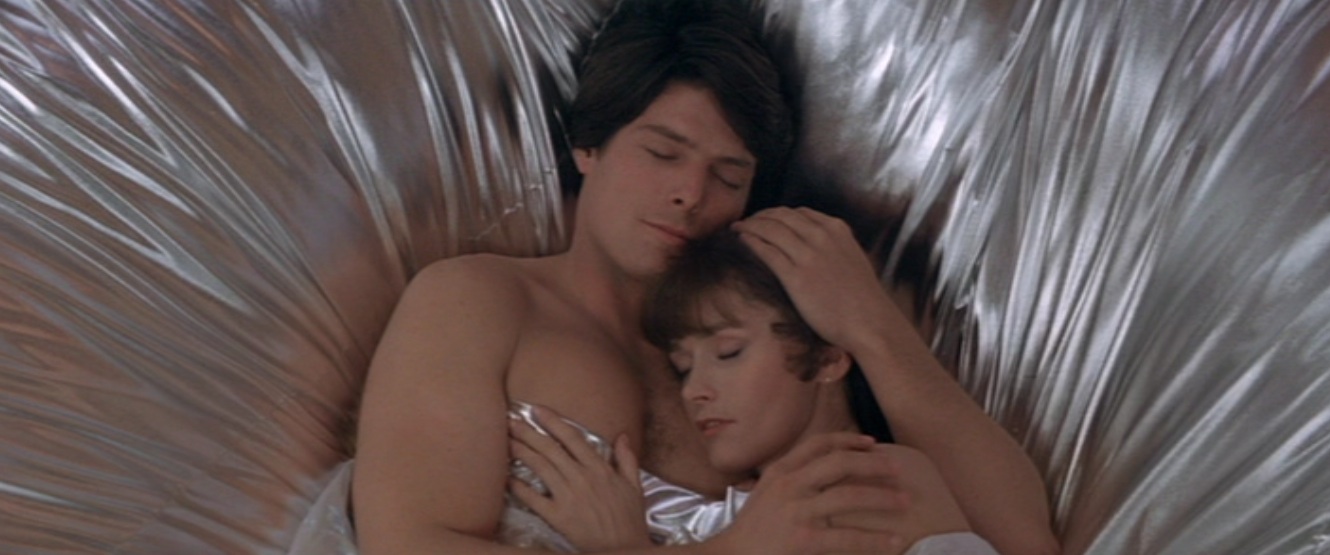
Super dry look
The plot is typical of the serial genre, which has to stretch things out over 15 episodes. Our villain, the Spider Lady, is after the mysterious reducer ray, “a force more powerful even than the atomic bomb!” Basically it’s a ray gun. First she tries to steal it. Then she hires “a brilliant scientist with a warped mind,” to invent a kryptonite gun. That goes nowhere. Then she kidnaps the original inventor and forces him to create a second reducer ray. He refuses, but complies under torture. But he needs “mono chromite.” It takes a few chapters to get that, at which point he refuses again. So now he’s hypnotized. Etc. etc. Even so, this is our first live-action Superman, and former dancer Kirk Alyn looks like he's having fun in the tights.
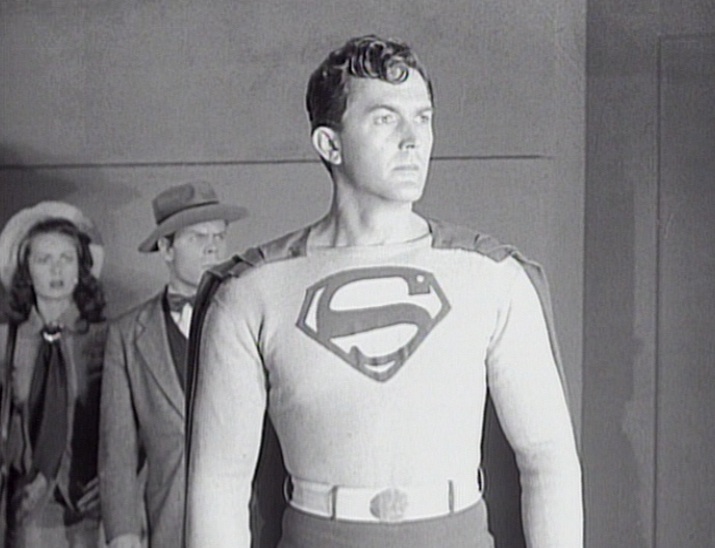
Super new
4. Superman II: The Donner Cut (1981/2006)
A lot of “Superman II” was filmed along with “Superman: The Movie,” but then its producers canned director Richard Donner and brought in Richard Lester; and Lester brought along his own sensibility; and it wasn't good. Donner's version begins with one of the most charming scenes in any Superman movie. In the Daily Planet offices, Lois draws glasses on a photo of Superman, and a light-bulb goes on. Then she spends the next five minutes teasing him. Then she opens a window and falls out. “You won’t let me die, Superman!” she cries. He doesn’t. But he doesn't reveal his identity, either. It’s fun, clever, sexy. It’s better than any scene in Lester’s version. And it wound up on his cutting-room floor. You watch it and want to call Superman. Because we wuz robbed.
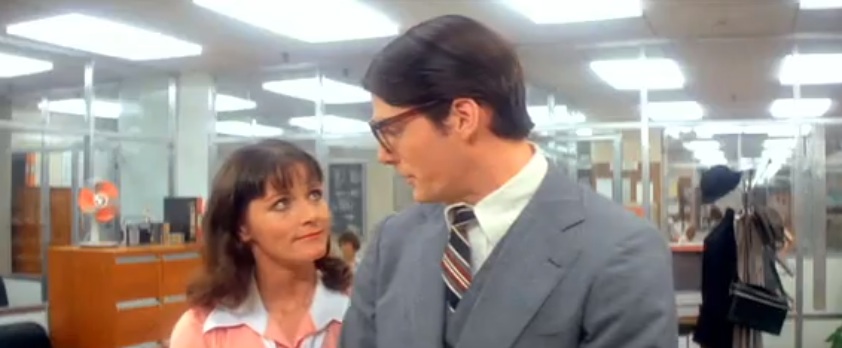
Super cute
Brandon Routh is actually several years older than Christopher Reeve was when he first put on the cape; he just looks younger. But Kate Bosworth? She was 22 when they filmed this. And she has a 5-year-old? From a consummation six years earlier? That’s some awkward math. Kidder and Reeve were adults in a gritty adult world—New York in the 1970s—but these two look like kids and act like kids. Lois assumes her pain is the world’s pain, while he can't get over the fact that she's angry that he left for five years without a word. Even so, the movie brings cohesion to the whole Donner enterprise. Superman travels to Krypton to discover he's its last son, then travels back to Earth to find out he isn’t. He goes searching for Krypton but finds it in his own backyard.
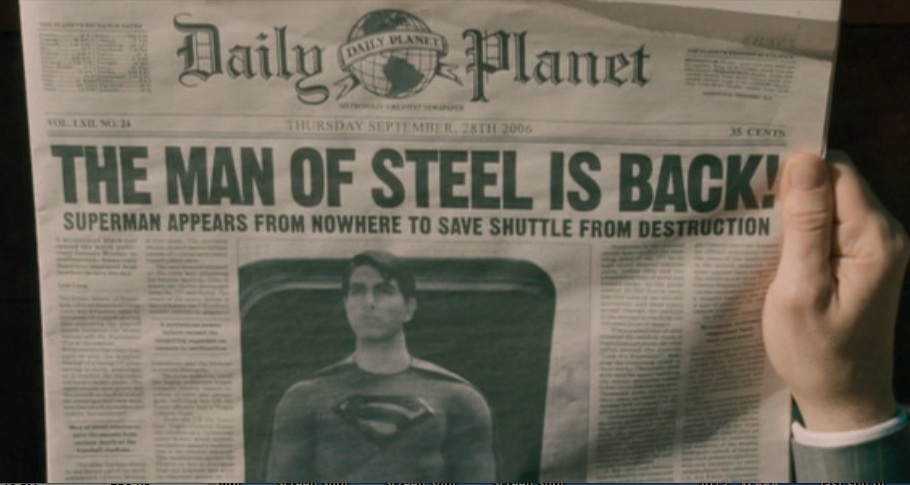
Super attempt
The good changes to the Superman mythos include: 1) wanderlust, bearded Clark; 2) people freaking when Supes first shows up; and 3) Lois Lane figuring out his secret identity before anyone else knows he even exists. The bad includes: 1) the adventures of Jor-El, free-thinking scientist; 2) the codex; 3) the whole Kryptonian natural childbirth movement. And the ending, but not for the reasons others say. I'm just bummed Superman couldn't figure out a smarter way to defeat Zod. “Mind over muscle, Superman?” Lex Luthor said in the first Chris Reeve movie. Here, it's muscle over mind. Again.
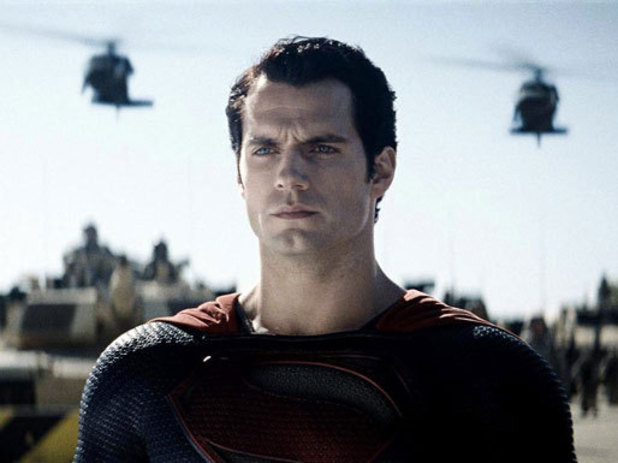
Super idea
Here’s creative consultant Tom Mankiewicz on what happened when Christopher Reeve finally got his screen test:
He hopped off the balcony and said, “Good evening, Miss Lane.” And [cinematographer] Geoffrey Unsworth looked over at me and went [makes impressed face]. Because the tone was just right. He went through the test and we just knew we had him.
The movie was Kryptonian in its advancement. It took another 11 years before we got Tim Burton’s “Batman” and another 11 years after that to get to Bryan Singer’s “X-Men.” Twenty-two years: an entire generation. Back in the mid-1970s, Hollywood, enamored of disaster and devil movies, didn’t think much of superhero movies. But it only lacked the light to show it the way.
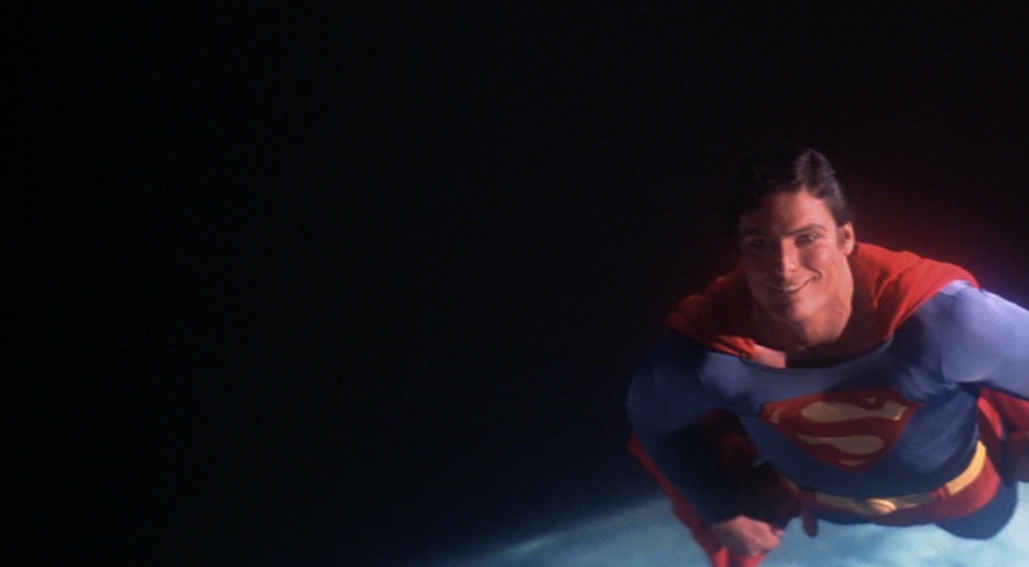
Super
Sunday June 16, 2013
SLIDESHOW: A History of Superman Onscreen
All previous entries
Baseball's Active Leaders, 2023
What Trump Said When About COVID
Recent Reviews
Everything Everywhere All at Once (2022)
Black Panther: Wakanda Forever (2022)
Doctor Strange in the Multiverse of Madness (2022)
Spider-Man: No Way Home (2021)
The Cagneys
A Midsummer Night's Dream (1935)
Something to Sing About (1937)
Angels with Dirty Faces (1938)
A Lion Is In the Streets (1953)
Man of a Thousand Faces (1957)
Never Steal Anything Small (1959)
Shake Hands With the Devil (1959)








